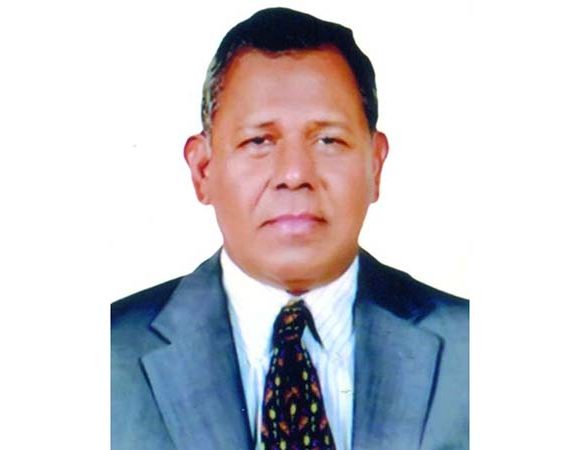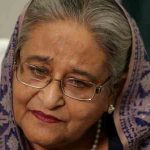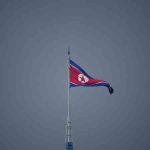Narco-terrorism in Myanmar: A danger signal for the region and beyond

Md Nayeem Ashfaque Chowdhury, PhD
The term narco-terrorism was possibly used by former President Fernando Belaúnde Terry of Peru in 1983 while he was describing the terrorist attacks against his nation’s anti-narcotics police. Following this the term started being used by many to identify the terrorist organisations who are engaged in drug trafficking activity to fund their operations and gain recruits and expertise. During the past decade, attempts have been made to broaden the security agenda to include the military and other sectors: political, economic, societal and ecological. Furthermore, globalisation and the opening up of the economy have provided scope for cross-border migration and also illicit trade, especially narcotics, terrorism and a dangerous mix of both: narco-terrorism. Political instability, economic insecurity, lack of democracy, and other geopolitical and domestic instability promote narco-terrorism. Narco-terrorism is an ideal sector which generates threats not confined to any geographical location and integrates the population of almost all strata of society. It is a transnational, non-state and potentially non-military security issue which generates threats to the whole spectrum of security covering political, social, economic, environmental, military, and human security transnationally throughout its production, trafficking and distribution. Narco terrorism becomes a serious threat to national security due to its cross-border involvement and its diabolic alliance with terrorist groups. Unfortunately, Bangladesh is located just beside the vortex of narco-terrorism i.e. in Myanmar. Bangladesh from its inception has been suffering from its Southeastern neighbour’s political, military, and social turbulence and convulsions including existence of the whole cycle of narco-terrorism.
Myanmar is one of the territories within the infamous Golden Triangle (with the other being the Golden Crescent) where illicit opium production occurs. The geographical limits of the Golden Triangle are the area in which the borders of China, Thailand, Laos, and Myanmar meet at the confluence of the Ruak and the Mekong Rivers. As of 2021, 90% of the illicit heroin globally, and more than 95% of the European supply was from Afghanistan’s harvest. Opium production in Afghanistan has significantly declined in 2022 as the authority has imposed a ban on opium cultivation. Myanmar, which was the world’s second-biggest producer of heroin, surpassed Afghanistan. According to a UN report, opium production nearly doubled in 2022 since the military coup two years ago. The farmers of Myanmar devote more land to growing poppies amid economic turmoil and disruptions. As per UNODC’s record, the cultivated area expanded by 33% to 40,100 hectares in 2022, while the average estimated yield rose 41% to nearly 20 kg per hectare.
Due to successive replacement of military junta, the military establishment became more powerful (even through the change in constitution), unaccountable, aggressive, and corrupt. Increased and rampant human right abuse, pervasive violence by unaccountable law enforcing agencies, extrajudicial killings, torture, displacement, thrived black market and illicit economies especially related to flooded drug become a normal phenomenon in Myanmar. Drug related illicit economies became particularly appealing to the military dictatorship after 1997 when the U.S. imposed sanctions and embargoes against Myanmar. The military, which is in power following the coup in February 2021, is neither willing nor capable of launching a war on opium cultivation and the rapidly growing production of synthetic drugs. In a plummeting economy coupled with a wide range of sanctions by the Western countries followed by investors’ exit, there are strong allegations of linking the military’s top brass with the drug syndicates to profit from the multibillion-dollar trade. The Burmese government views the informal economy as a necessary evil to respond to the severe economic sanctions implemented against them by the U.S. and other international actors. Drug exports generate $1 to $2 billion annually. As we all know, the armed struggle against the Myanmar military junta is one of the oldest separatist movements in the world spanning over six decades. Some of the ethnic armed organisations are also allegedly involved in the production and smuggling of drugs as it is more profitable and can earn quick money. In early 2020, the largest seizure of narcotics by Myanmar security forces accounted for over 17 tons of methamphetamine tablets, 500 kg of crystal methamphetamine, 292 kg of heroin, and 588 kg of opium during a series of interdiction operations in northern Burma. On 26 June 2023, Myanmar authorities torched almost half a billion dollars of illegal drugs (heroin, cannabis, methamphetamines, and opium) and admitted that they are failing to stop a surge in the production and trafficking of narcotics. “Even though countless drug abusers, producers, traffickers and cartels were arrested and prosecuted, the production and trafficking of drugs have not declined at all,” Soe Htut told the Global New Light of Myanmar newspaper. UNODC Regional Representative Jeremy Douglas said in a statement accompanying the release of the report “Economic, security and governance disruptions that followed the military takeover have converged, and farmers in remote, often conflict-prone areas in northern Shan and border states have had little option but to move back to opium,”. In Shan state, 49% of households in the villages cultivate opium poppy. The farmers are forced to grow poppy as the Tatmadaw issued heavy taxes on other traditional crops. Due to the surge in commodity prices, the cost of growing regular crops has grown to almost 1,500,000 Kyats per acre. In contrast, cultivating poppies only costs about 800,000 Kyats per acre, according to a report published in Shan Herald Agency for News on 6 April 2023. Myanmar’s physical terrain makes it easy for transnational organised groups to run their operations. The country has long borders that are ideal for smuggling contraband. The regional countries and the world need to worry as wide-scale poverty, poor governance, conflict-stricken territory and a plummeting economy of Myanmar creating a conducive environment for drug production, and trafficking. Drugs are being trafficked to countries like China, Thailand, India, Laos, Bangladesh, Vietnam, Indonesia, Malaysia, Brunei Darussalam, South Korea, Cambodia etc. While China and India profit from producing and selling the base materials for illicit drugs, Myanmar is the “epicentre of the drug trade in the Mekong region”.
Trafficking in synthetic drugs, notably Amphetamine type stimulants (ATS) or methamphetamine or ‘yaba’, is growing faster than trafficking in plant-based drugs over the past two decades, according to global seizure data. Global seizures of ATS rose rapidly over the previous decade. Methamphetamine seizures rose fivefold; amphetamine, fourfold; and “ecstasy”, threefold. Trafficking of illegal drugs, notably methamphetamine or ‘yaba’, from Myanmar to all its neighbouring countries has risen alarmingly since the 2017 Rohingya influx in Bangladesh. Police across Chattogram division alone seized 34.76 lakh Yaba pills in 2016. The number increased to 1.2 crore in 2018 and 2.59 crore in 2021. The yaba is transported from Maungdaw in Rakhine to the Tombru border, from where it seeps into the Rohingya camps situated just beside the zero-line border along Bangladesh. At least 70 lakh yaba pills, at the cost of Tk 210 crore, are consumed by Bangladeshis every day. There were 56 drug-related deaths in 2017. It went up to 396 in 2018 and was 256 in 2019, 2967 in 2020. Another new drug called crystal methamphetamine or ice entering from Myanmar into Bangladesh and destroying the youth physically and mentally let aside other social, economic, and security impacts. Law enforcement agencies of Bangladesh seized 65 grams of crystal meth only in 2020 while 36.798 kg in 2021 and 113.331 kg in 2022. Ten grams of crystal ice can cost up to Tk1 lakh. In 2022 alone authorities in Laos, Thailand and Myanmar seized 90 million methamphetamine pills, and 4.4 tonnes of crystal meth as reported by Rauters.
“Drugs and conflict remain inseparable in Myanmar, one feeding the other,” Jeremy Douglas, UNODC’s regional representative in Southeast Asia said, adding: “Chaos and instability work for traffickers.” Transnational organised crime increased due to governance vacuums in Myanmar. Unless we recognise the deadly effect of the situation and take immediate concerted effort from the international community, the region and the world will continue to suffer from the narco-terrorism inferno of Myanmar with little chance of victory. International community must ensure a situation so that Myanmar’s transnational organised crime network does not become a destabilising factor in this region and beyond.
The writer is a retired Major General of Bangladesh Army

















